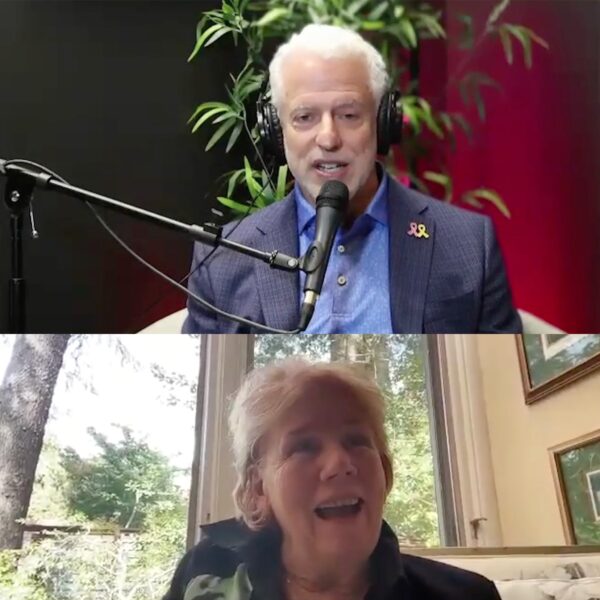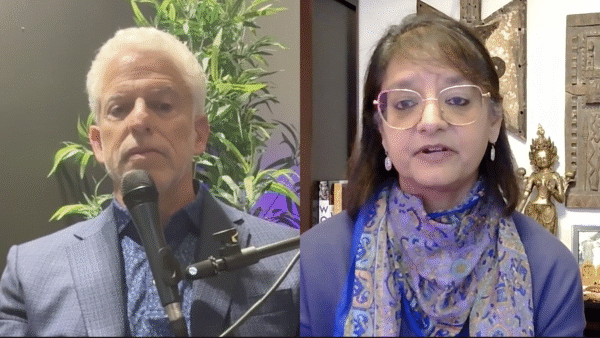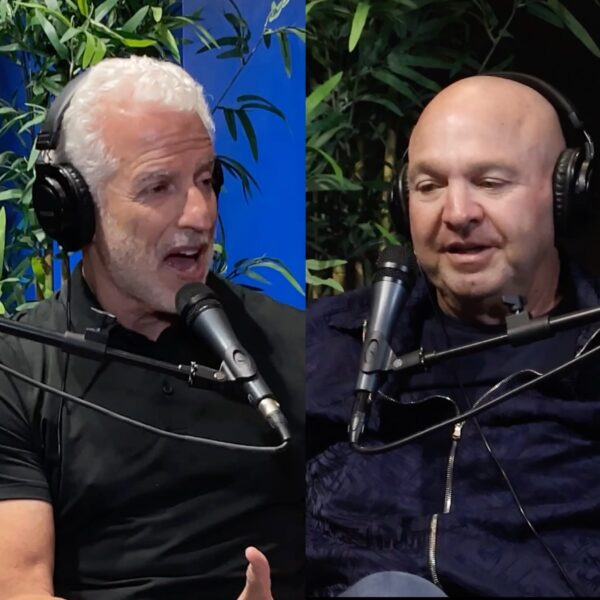Our podcasted show continues as we transition from radio to an all-podcast format. Host Bob Roth kicked off this new chapter with longevity pioneer, author, serial entrepreneur, and age-tech visionary Mary Furlong. Together, they explored how innovation, venture capital, AI, and a rapidly growing boomer population are reshaping what it means to age, and why the $8.3 trillion longevity economy is the most important market transformation of our time.
🎧 For the full episode, CLICK HERE
From SeniorNet to the Modern Longevity Movement
Furlong’s career began long before “age tech” was a term. In the early 1980s, while teaching at Catholic University, she co-authored Computers for Kids Over 60, sparking workshops in senior centers with Commodore VIC-20s and TVs strapped to flip charts. Her early insight was profound: technology wasn’t about the tools, it was about giving older adults confidence, connection, and purpose.
That spark grew into SeniorNet, one of the first social networks for older adults, founded years before AOL. Supported by the Markle Foundation and corporate partners like IBM, the program expanded to more than 100 learning centers nationwide.
She later launched ThirdAge Media, one of the earliest digital platforms focused on older adults, backed by Viacom/CBS. Today she runs Mary Furlong & Associates (MFA), a consulting firm, newsletter, podcast network, and producer of two flagship events: The Longevity Venture Summit and The Washington Longevity Innovation Summit at the National Press Club.
“When I think about longevity,” she told Roth, “it’s not about the technology, it’s about unlocking the talent, creativity, and leadership of older adults.”
The Rise of the $8.3 Trillion Longevity Marketplace
Furlong emphasized that demographic shifts, new technology, and evolving public policy are converging to create the most significant economic opportunity in decades. Boomers are turning 80 next year, and demand for tools that support independence, safety, connection, and creativity is exploding.
“We’re at the same kind of inflection point we saw when the internet first emerged,” she said. “Longevity and AI together are creating a whole new market.”
Through MFA’s portfolio, she supports companies in mobility, brain health, caregiver support, fall prevention, financial longevity, and social connection. Many of these ideas are born through her business-plan competition, now in its 23rd year, a proving ground that has launched companies generating more than $100 million in revenue.
Entrepreneurs come with brilliant technology, she notes, but often lack understanding of the aging-services ecosystem. Her events and advisory work bridge that gap.
Policy, Innovation, and the Power of Codes
Furlong’s Washington summit brings together state aging directors, AARP, US Aging, AgeTech Collaborative, venture capitalists, universities, and founders to dig into the evolving landscape of reimbursement and regulation.
“Value creation turns on demographics, technology, and the regulatory environment,” she said. “Codes are changing every year, sometimes every month.”
New reimbursement codes are beginning to support caregiver training, mobility and fall-prevention programs, remote monitoring, and virtual care management. These changes represent a fundamental shift in how care can be delivered and financed, especially for aging in place.
For home care and senior-living providers, the implications are seismic.
“If we want Americans to age safely and independently, we must empower them with technology,” Furlong said. “We’re not going back to paper. We’re only going forward.”
Why Housing and Home Modifications Are the Sleeper Issue
Roth and Furlong also discussed one of the country’s biggest but least understood challenges: the home itself. The vast majority of U.S. housing is not designed for aging or disability, and most older adults want to remain exactly where they are. As the 85+ population is expected to nearly quadruple by 2050, the need for accessible, adaptable homes will grow dramatically.
Furlong is tracking innovation in home modifications, adaptive mobility, smart home safety, lighting, bathroom design, and new housing concepts that blend health care, social connection, art, and community under one roof. She noted that corporate players are entering the market, and international companies from Italy to Korea are exploring partnerships focused on mobility, brain health, and aging-in-place technologies.
AI, Brain Health, and the Next Wave of Tools
Artificial intelligence is already reshaping longevity markets. Furlong described innovations ranging from AI-supported care assistants and social robots to advanced diagnostics in cardiac and cognitive health. She highlighted emerging Alzheimer’s blood tests, breakthrough mobility devices, and sophisticated tools for fall prevention and virtual caregiver training.
“The pace of innovation is unlike anything I’ve seen since the birth of the internet,” she said. “AI isn’t replacing human care. It’s enabling it.”
The Caregiver Shortage: A Global Challenge and Opportunity
No issue looms larger in aging services than the caregiver shortage. Furlong believes addressing it requires a multi-dimensional strategy. She described the need for new training pathways for caregivers, physical therapists, occupational therapists, and nurses; global partnerships with caring cultures; flexible work arrangements; and greater recognition of caregiving as a respected profession.
She also sees tremendous promise in older adults themselves. Many boomers want purpose, connection, and flexible work later in life, and caregiving offers all three. Appropriately supported, trained, and compensated, older adults could become a powerful part of the workforce that helps their peers remain at home.
“Caregiving is the profession of the future,” she said. “It should be as respected as law or medicine.”
Aging with Purpose, Vitality, and Creativity
More than anything, Furlong rejects outdated stereotypes about aging. Boomers, she says, want to travel, stay active, seek romance, enjoy their grandchildren, contribute creatively, and look and feel vibrant, not invisible. She laughed about the idea of launching a lifestyle brand called “Still Fab,” because that’s the spirit she sees everywhere: older adults who want to feel fashionable, purposeful, and alive.
She urges senior-living communities, home-care agencies, nonprofits, and innovators to borrow from environments that already get it right, including cruise ships, which seamlessly integrate nutrition, movement, socialization, education, and design.
“Older adults need a vision of the future,” she said. “Not just a memory of the past.”
Looking Ahead: The Greatest Challenge of Our Time
Roth closed the episode by noting that caring for an aging nation is “not only the greatest problem solve of our generation, it may be one of the greatest in human history.” Furlong agreed and emphasized that the next 30 years will redefine how we think about age, health, connection, and purpose.
“This is our moment,” she said. “Longevity is the movement of the next 30 years.”
📌 Learn More
Discover how Cypress supports families: CypressHomeCare.com or call (602) 755-9584
🎧 Catch the full episode of Health Futures: Taking Stock in You:
📝 This content is intended for educational purposes only and should not be considered medical advice. Please consult professionals regarding your individual needs.




